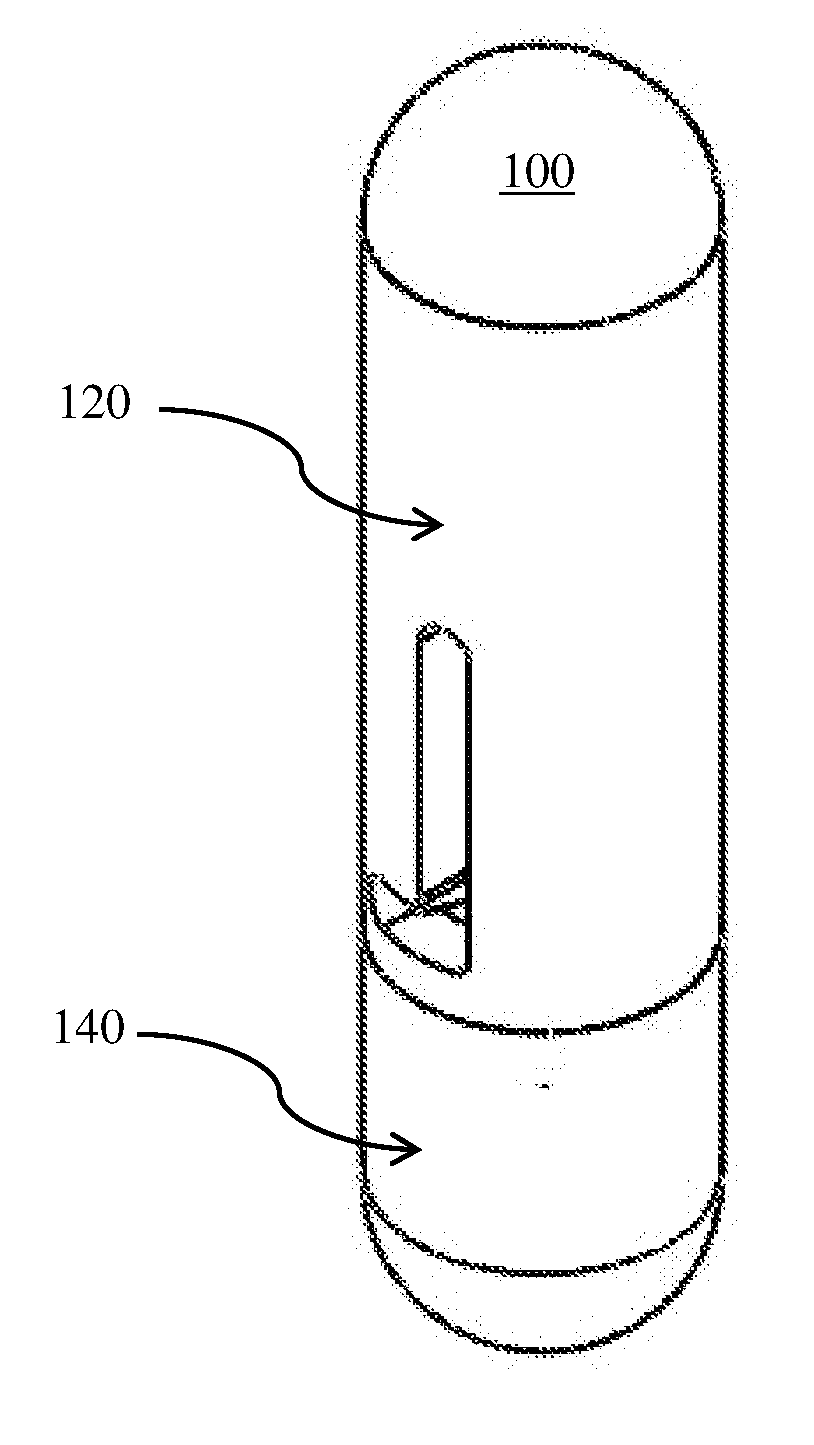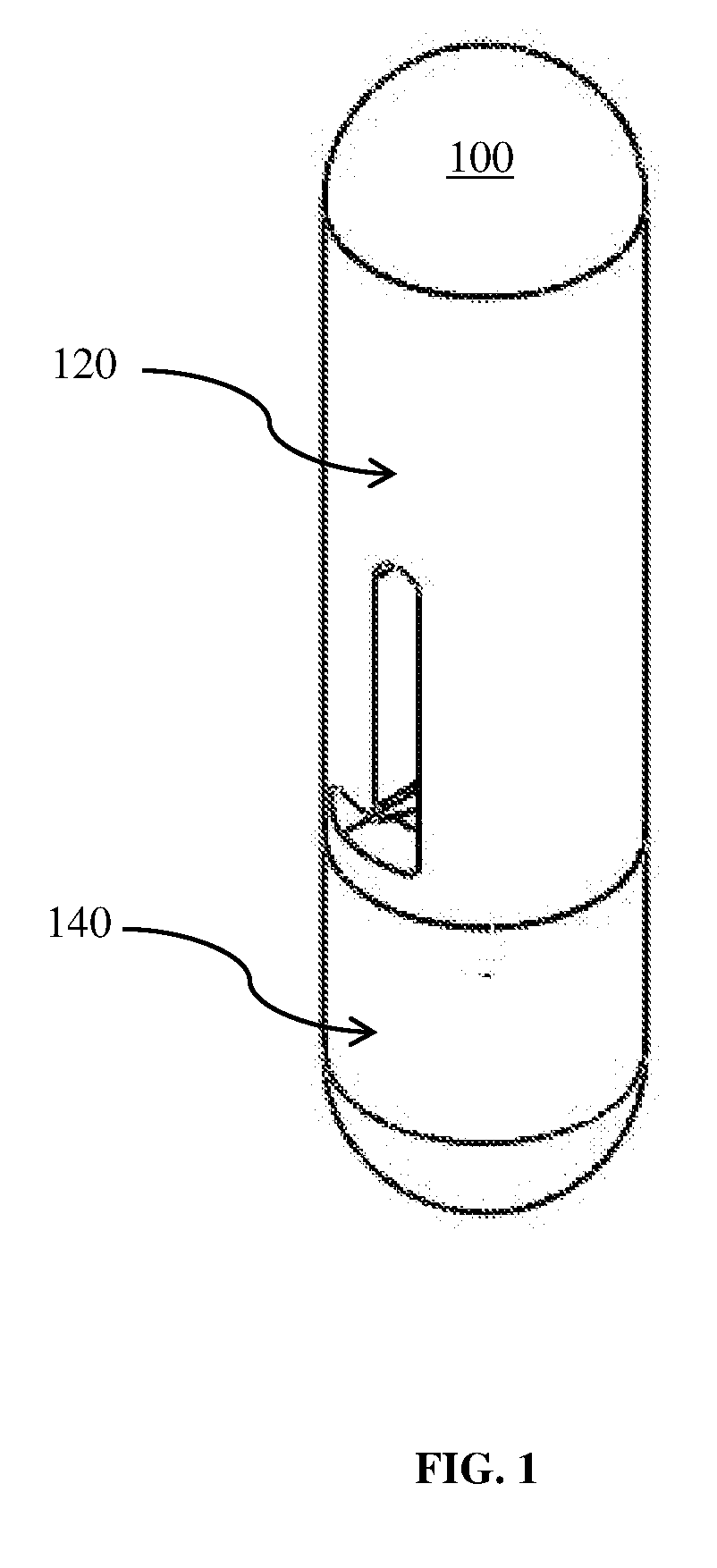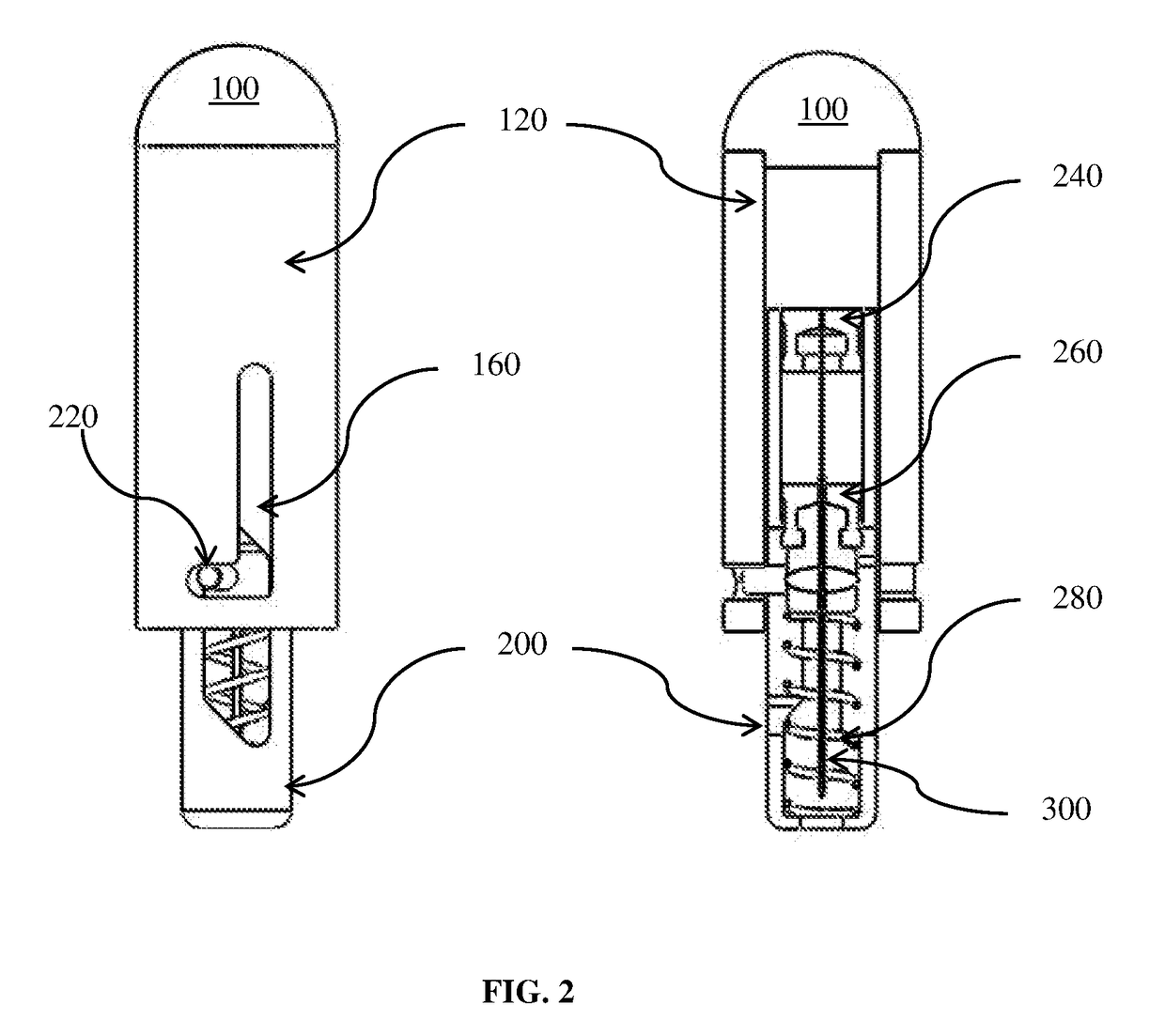Painless drug implanter
a drug implanter and painless technology, applied in the field of painless drug implanters, can solve the problems of not being able to administer all biologics orally, toxic to the body, and need a large dose, and achieve the effects of no pain, increased volume, and rapid perpendicular insertion
- Summary
- Abstract
- Description
- Claims
- Application Information
AI Technical Summary
Benefits of technology
Problems solved by technology
Method used
Image
Examples
Embodiment Construction
[0029]The present invention aims to provide a painless means to deliver a sizeable drug load into the body. As discussed previously, the injection method is painful, partially due to the insertion of the needle into a body, but more significantly due to injecting a finite volume of drug into the body, which has to make space for that finite volume. The present invention achieves its objectives by two principles. The first principle is that when a cannula is rapidly inserted into the body in a substantially perpendicular manner, provided that the size is small enough, i.e. gauge size of 27 G to 34 G, i.e. with outer diameter between 0.4 mm-0.18 mm and that the insertion speed exceeds 1 m / s, the insertion of the cannula into the body is quite painless. Therefore, the present invention incorporates a rapid perpendicular insertion of cannula to eliminate pain due to needle insertion.
[0030]The second principle is that pain is incurred only when the occupied volume caused by the implantat...
PUM
 Login to View More
Login to View More Abstract
Description
Claims
Application Information
 Login to View More
Login to View More - R&D
- Intellectual Property
- Life Sciences
- Materials
- Tech Scout
- Unparalleled Data Quality
- Higher Quality Content
- 60% Fewer Hallucinations
Browse by: Latest US Patents, China's latest patents, Technical Efficacy Thesaurus, Application Domain, Technology Topic, Popular Technical Reports.
© 2025 PatSnap. All rights reserved.Legal|Privacy policy|Modern Slavery Act Transparency Statement|Sitemap|About US| Contact US: help@patsnap.com



